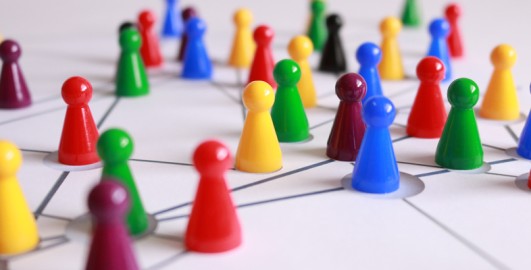1 Understanding ‘diversity’
It is important to start by considering what is meant when talking about ‘diversity’ in teams. The Oxford English Dictionary defines ‘diversity’ as
- The quality, condition, or fact of being diverse or different; difference, dissimilarity; divergence.
- The fact, condition, or practice of including or involving people from a range of different social and ethnic backgrounds, and (more recently) of different genders, sexual orientations, etc.
Diversity is commonly thought of as any attribute that can be used to differentiate groups and individuals from one another. You can imagine this attribute varying along a dimension of its own, largely independent of other attributes. For example, individual height is an attribute that exhibits diversity.
Activity 1 Types of diversity
Consider groups and teams that you are part of either in the workplace or in your social life. When you think of diversity, what characteristics do you feel this describes? See how many different types of diversity you can think of from the teams and groups you are part of. You may find it helpful to have a look at Figure 1 and consider the types of diversity that are visible here. What types of diversity are not represented in this image?
Comment
How many ways did you differentiate the groups and teams you have been part of or the image of the group you can see in Figure 1?
Some of the types of difference you may have described include:
- age
- ethnicity
- sex
- visible disability.
These types of diversity are immediately obvious as you can see them. Other types of diversity may not be visible at first glance and some of these may include:
- hidden disability
- wealth
- educational background
- sexual orientation
- culture
- values
- learning style.
You may well have come up with other ways that people in groups and teams can be different from each other.
As you’ve already learned, when people bring differences into a team, they can act as a catalyst for new ideas and widening perceptions, increasing the team’s creativity and productivity. You’ll explore the benefits in more detail later this week.
In the next section, you’ll consider how the workplace of today has changed from 60 years ago.

